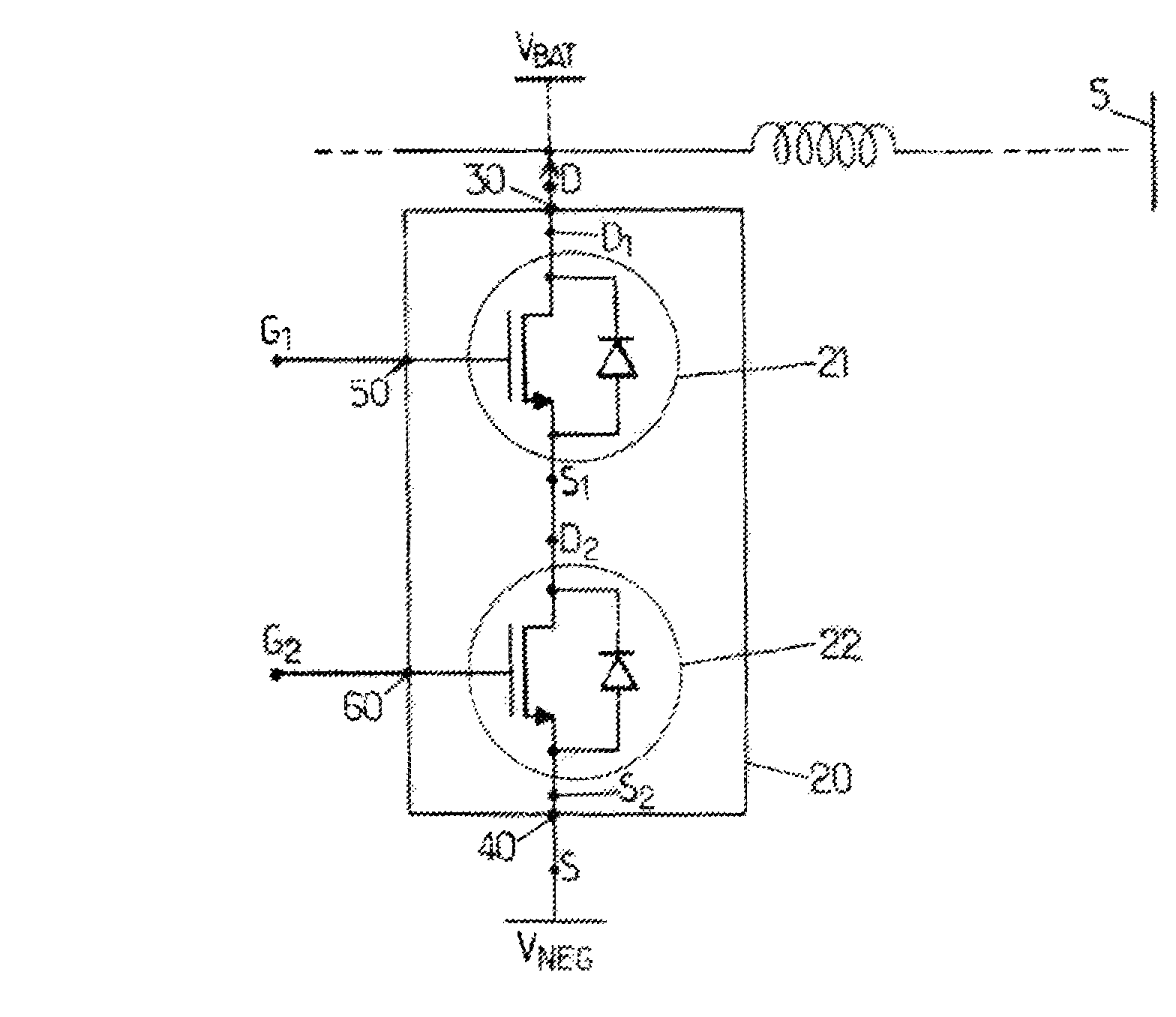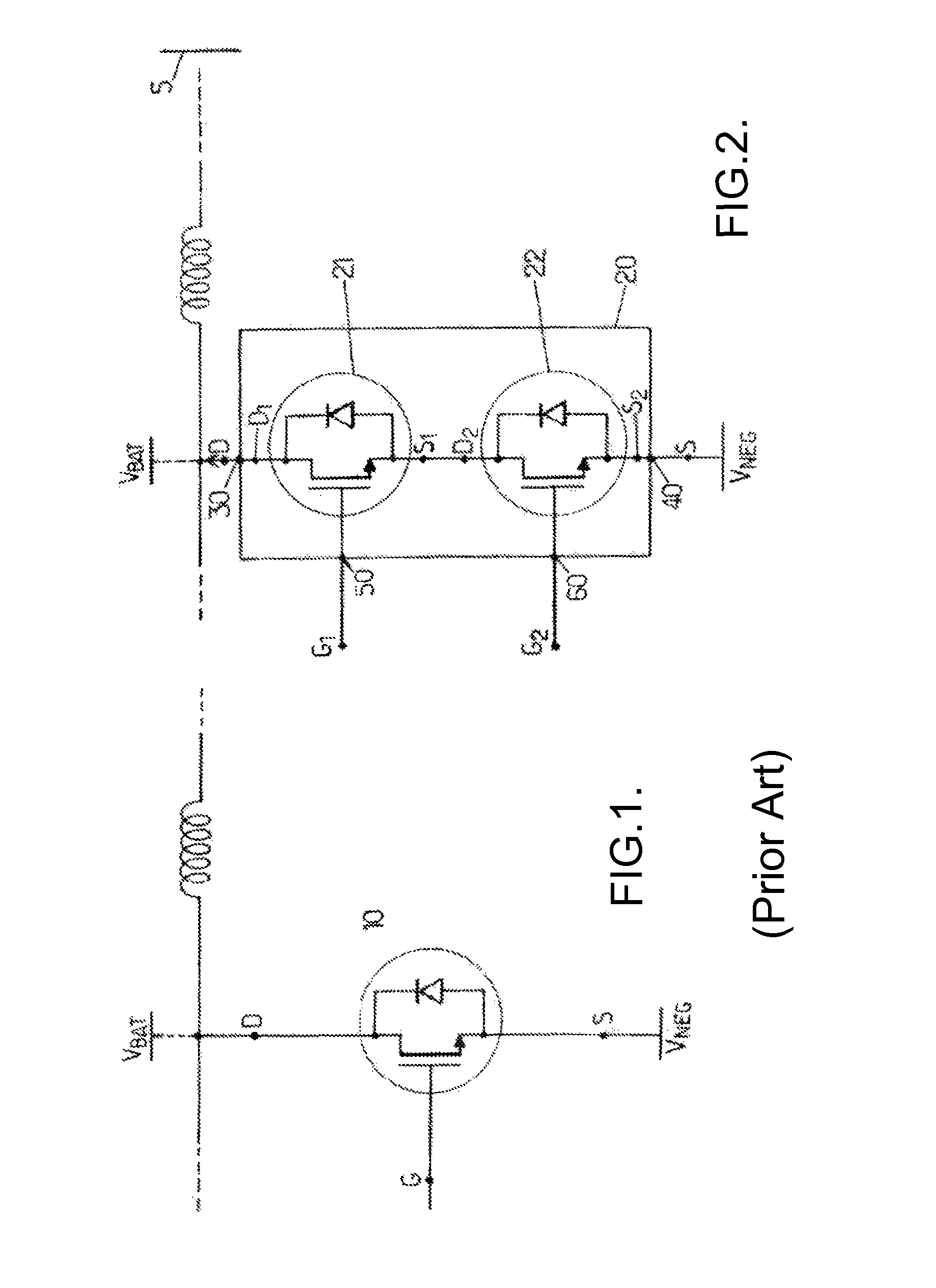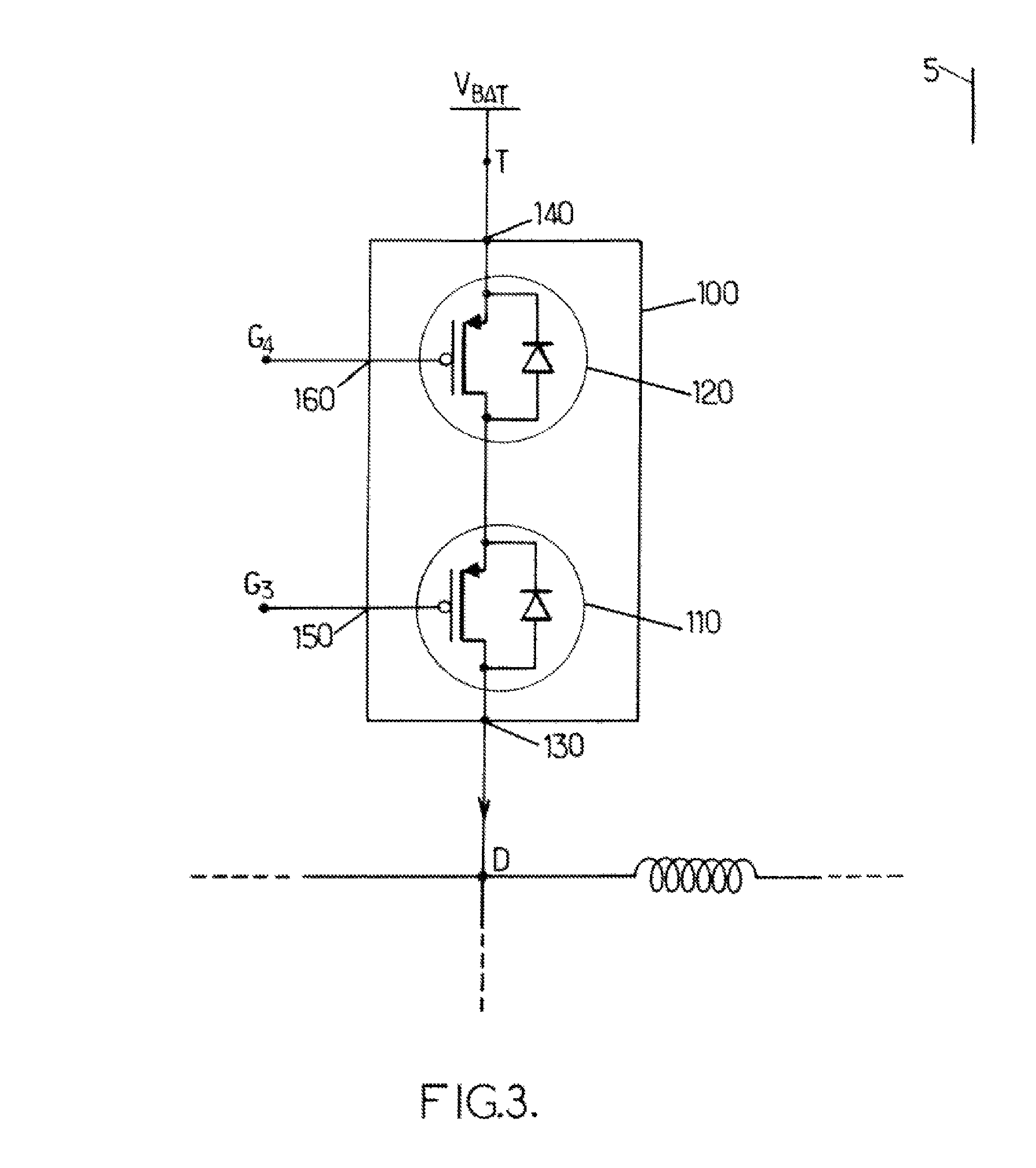Controlled switch for opening or closing on demand a section of an electrical circuit of a power stage
a technology of power stage and control switch, which is applied in the direction of pulse technique, dc-dc conversion, power conversion system, etc., can solve the problems of high voltage vsub>ds of mos transistors that are costly and/or unsuitable for production and application via reliable, and achieve reliable and cost-efficient industrial processes.
- Summary
- Abstract
- Description
- Claims
- Application Information
AI Technical Summary
Benefits of technology
Problems solved by technology
Method used
Image
Examples
Embodiment Construction
[0069]In this description, when it refers to a voltage at a node of a circuit, this is understood to mean the difference between the potential at said node and a reference potential common to the entire circuit. The reference potential is also commonly referred to as the ground, and has a value that is generally equal to 0V.
[0070]One embodiment of a controlled switch 20, included in a section of an electrical circuit 5 of a power stage, is represented in FIG. 2. The switch 20 comprises a first coupling node 30 and a second coupling node 40. The switch 20 also comprises at least a first control input 50 and a second control input 60. The switch 20 is adapted to open or close an electrical circuit between the first coupling node 30 and the second coupling node 40, as a function of the control voltages received on the first input 50 and the second input 60. In the example in FIG. 2, the first coupling point 30 is coupled to a node D of the circuit 5, and the second coupling point 40 to...
PUM
 Login to View More
Login to View More Abstract
Description
Claims
Application Information
 Login to View More
Login to View More - R&D
- Intellectual Property
- Life Sciences
- Materials
- Tech Scout
- Unparalleled Data Quality
- Higher Quality Content
- 60% Fewer Hallucinations
Browse by: Latest US Patents, China's latest patents, Technical Efficacy Thesaurus, Application Domain, Technology Topic, Popular Technical Reports.
© 2025 PatSnap. All rights reserved.Legal|Privacy policy|Modern Slavery Act Transparency Statement|Sitemap|About US| Contact US: help@patsnap.com



